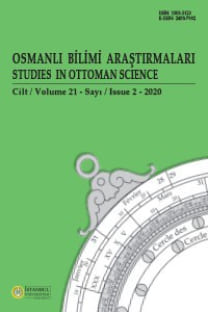Cerrahpaşa’da Bir ‘Ders-i İftitahi’ 11 Teşrinievvel 1925
The year 1924 signifies both a re-organisation in Turkish medical education, and a relocation of its training clinics. The new curriculum was fashioned after the French model: the first year included a basic sciences certificate program or baccalauréat medicale. In the final year, the candidates were required to complete a series of ‘doctorate’ examinations. Concurrently, the clinics of the Medical Faculty were hastily transferred to the hospitals in the old city across the Bosphorus, despite the disapproval of the majority of the academic staff and the students.The Dean, Professor Neşet Ömer İrdelp, was one of the proponents of the project. In an inaugural lecture (inceptio) on the 11th of October 1925, he addressed the issues related to the reformation and its implications on clinical teaching. He chose to deliver his lecture not in the Medical School at Haydarpaşa, but at the Cerrahpaşa Hospital where a number of clinics were stationed during the preceding academic year.Professor İrdelp’s lecture was published in the Faculty’s medical journal. There is, however, a second text of the same lecture printed in mimeograph, which appears to be complete and unedited. The theme and style of the two texts differ substantially. The unedited ‘Cerrahpaşa version’ recorded in handwriting by the students, reflects İrdelp’s personality and presentation as orator, and is a unique example as such. In this lecture, Neşet Ömer İrdelp focused on the reformation of medical education, while in the edited and abridged ‘Haydarpaşa article’, emphasis is given to formal clinical instruction. The educational elements of the 1924 reformation were incorporated into the new curriculum of the medical school. The decision to use the clinics of the municipality hospitals, however, was reversed in the following academic year. A comprehensive university reform in 1933 not only transferred the location of the Medical school and its clinics to the European quarters of the Istanbul, but substituted a cadre of university professors from a whole range of institutions, at the same time.
Anahtar Kelimeler:
Neşet Ömer İrdelp, Tevfik Salim Sağlam, tıp eğitimi, reform, açış dersi, Türkiye
Neşet Ömer İrdelp’s inaugural lecture on the reformation in Turkish medical education (Cerrahpaşa, 1925)
The year 1924 signifies both a re-organisation in Turkish medical education, and a relocation of its training clinics. The new curriculum was fashioned after the French model: the first year included a basic sciences certificate program or baccalauréat medicale. In the final year, the candidates were required to complete a series of ‘doctorate’ examinations. Concurrently, the clinics of the Medical Faculty were hastily transferred to the hospitals in the old city across the Bosphorus, despite the disapproval of the majority of the academic staff and the students. The Dean, Professor Neşet Ömer İrdelp, was one of the proponents of the project. In an inaugural lecture (inceptio) on the 11th of October 1925, he addressed the issues related to the reformation and its implications on clinical teaching. He chose to deliver his lecture not in the Medical School at Haydarpaşa, but at the Cerrahpaşa Hospital where a number of clinics were stationed during the preceding academic year. Professor İrdelp’s lecture was published in the Faculty’s medical journal. There is, however, a second text of the same lecture printed in mimeograph, which appears to be complete and unedited. The theme and style of the two texts differ substantially. The unedited ‘Cerrahpaşa version’ recorded in handwriting by the students, reflects İrdelp’s personality and presentation as orator, and is a unique example as such. In this lecture, Neşet Ömer İrdelp focused on the reformation of medical education, while in the edited and abridged ‘Haydarpaşa article’, emphasis is given to formal clinical instruction. The educational elements of the 1924 reformation were incorporated into the new curriculum of the medical school. The decision to use the clinics of the municipality hospitals, however, was reversed in the following academic year. A comprehensive university reform in 1933 not only transferred the location of the Medical school and its clinics to the European quarters of the Istanbul, but substituted a cadre of university professors from a whole range of institutions, at the same time.
Keywords:
Neşet Ömer İrdelp, Tevfik Salim Sağlam, medical education, reform, inaugural lecture, Turkey,
___
- -
- ISSN: 1303-3123
- Yayın Aralığı: Yılda 2 Sayı
- Başlangıç: 1995
- Yayıncı: İstanbul Üniversitesi Edebiyat Fakültesi
Sayıdaki Diğer Makaleler
İstanbul Üniversitesi’nin Yerleşim Tarihçesi Üzerine Notlar
Feza GÜNERGÜN, Sevtap KADIOĞLU
Adam Karpowicz, Atilla Bir, Adam Karpowicz (ÇEV. ATİLLA BİR)
Cerrahpaşa’da Bir ‘Ders-i İftitahi’ 11 Teşrinievvel 1925
Ondokuzuncu Yüzyılda Anadolu'da Bir Bitki Toplayıcısı: Benjamin Balansa (1825-1891)
Asuman BAYTOP, Michele NİCOLAS
Ondokuzuncu Yüzyılda Anadolu'da Bir Bitki Toplayıcısı: Eugène Bourgeau (1813-1877)
Türk Menzil Okçuluğu, Yay ve Okları
Atilla BİR, Mustafa KAÇAR, Şinasi ACAR
Cerrahpaşa'da Bir 'Ders-i İftitahi' 11 Teşrinievvel 1925
Celâl Saraç ve Bilim Tarihi - Gaston Bachelard’ın Esinlediği Arayışlar
Celal Saraç ve Bilim Tarihi -Gaston Bachelard'ın Esinlediği Arayışlar-
